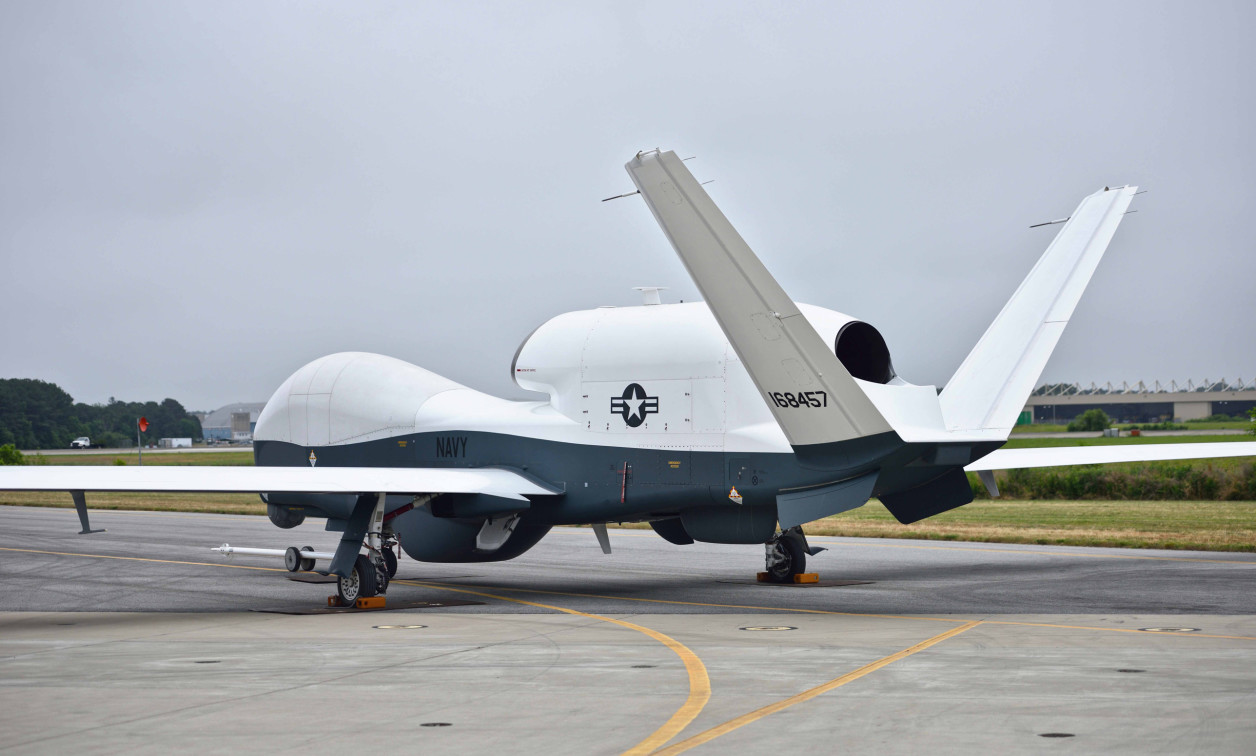U.S. Navy's MQ-4C Triton demonstrates new capabilities during flight tests
NewsJune 22, 2016

NAVAL AIR SYSTEMS COMMAND, PATUXENT RIVER, Md. The U.S. Navy?s MQ-4C Triton completed two flight tests demonstrating the unmanned aerial system (UAS) capabilities to extend its time on station as well as its interoperability between platforms.
During one demonstration conducted on June 2, an MQ-4C Triton and P-8A Poseidon exchanged full motion video for the first time via a Common Data Link. Cmdr. Daniel Papp, Triton integrated program team lead, says, “In an operational environment, this would enable the P-8 aircrew to become familiar with a contact of interest and surrounding vessels well in advance of the aircraft’s arrival in station.”
The flight test validated the Triton’s capability to increase situational awareness for the P-8 crew by tracking a target with its electro-optical/infrared camera.
The MQ-4C Triton also completed its first heavy-weight flight test. Officials say this will allow the UAS to expand its estimated time on station. Papp adds, “The heavy-weight envelope expansion work will enable Triton to realize its long dwell capability and become the unblinking eye for the fleet.” During this test, the UAS operated within the 20,000-foot altitude.
A second heavy-weight flight test was conducted on June 14 with the UAS operating in the 30,000-foot altitude band. Engineers designed the Triton to fly a mission of up to 24 hours at altitudes over 10 miles high, allowing the system to monitor two million square miles of ocean and littoral areas at a time. To date, the UAS has clocked more than 455 flight hours.
U.S. Navy officials say testing will continue on the Triton at Patuxent River to prepare for its first scheduled deployment in 2018.
Read more on unmanned systems:
Unmanned aircraft leverage PC/104, COM Express, and other small form factors
DARPA's CODE program for unmanned systems moves to Phase 2
More payload interoperability key for UAS platforms




